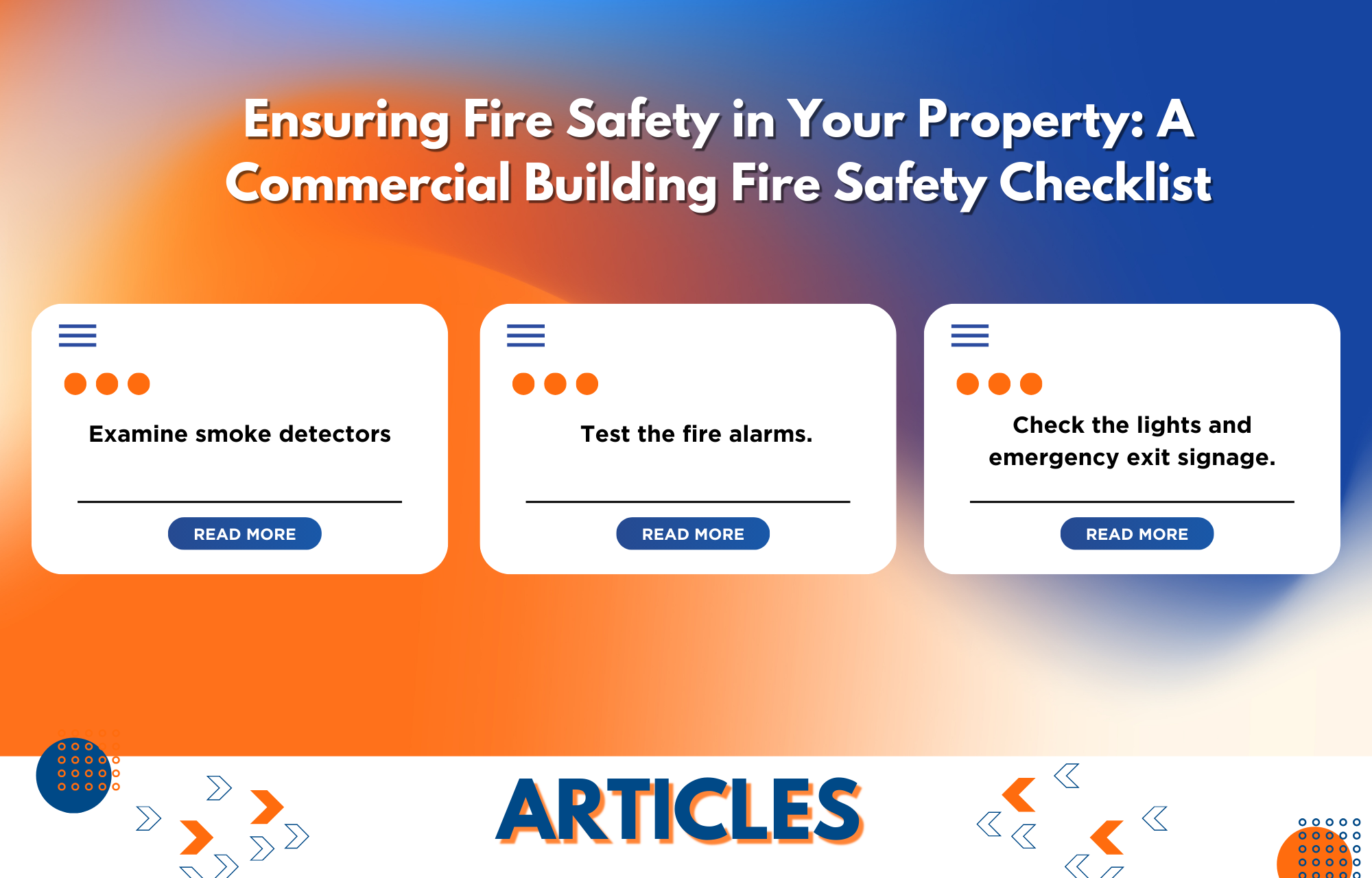Summary: It is impossible to stress how important it is for owners or property managers of commercial buildings to follow fire safety regulations. It is vital to prioritize the safety of the people and to put a thorough fire safety checklist into practice. At Rotaflow, we are dedicated to offering property owners and managers thorough information since we recognize the vital relevance of fire safety.
Here is a thorough fire safety checklist to assist you in keeping your commercial business property safe:
1. Examine smoke detectors
Your smoke detectors are your first line of defence in the event of a fire. Instead of running only on batteries, devices should ideally be hardwired in commercial buildings and have a battery backup. In either case, frequent testing is necessary to make sure they function effectively.
2. Test the fire alarms
In order to make sure that they notify people when necessary, fire alarms should also be tested annually. Combining fire alarm testing with a fire drill is a smart idea. During the drill, participants should practise safely exiting the building using the fire escape plan and map.
3. Examine the extinguishers
You can put out a fire without waiting for the fire brigade to arrive if you carry extra hand-held extinguishers with you. As long as you don’t risk your safety by attempting to use them when you ought to be leaving the building, they’re perfect for small fires. Verify that your fire extinguishers are stored in the proper location, are readily available for use in an emergency, and have not exceeded the inspections dates or service date of each unit.
4. Check the lights and emergency exit signage
Larger buildings should have emergency exit signs and lights that run off regular electricity to help direct people out of the building in the event of an emergency, such as a fire. If you have these lights, you are typically also responsible for ongoing testing as necessary under local regulations. Don’t forget to take tests to make sure they work and remain up-to-date on the rules on how big and bright they have to be, as they can change over time. Monthly checks and annual 30 min tests.
5. Examine the sprinkler system
In accordance with local fire codes, sprinklers should also be inspected on a regular basis. Monthly visual inspections (looking for corrosion, tampering, etc.) Quarterly inspections of pressure gauges, pressure switches, hose valve connections, semi annual inspections of all sprinkler devices reporting to Fire monitoring panel.
Annual inspection of all devices associated with the fire monitoring panel, visual checks of sprinkler heads for damages.
6. Make Sure Fire Exit Plans and Building Maps Are Posted Clearly
Most business establishments should have a map posted at regular intervals that indicates the viewer’s location and provides instructions on how to safely exit the building. Verify that your maps are complete, and for added security, go over your escape strategy with a fire drill on a regular basis. Don’t forget to upload or edit maps if you renovate or expand the building.
7. Analyse Fire Hoses and Fire Pumps
Essential parts of fire suppression systems are fire hoses and pumps. Make sure fire hoses are correctly attached to water sources and check them for wear or damage. Test fire pumps annually with forward flow test to ensure they are dependable and operational in an emergency. Diesel fire pumps required to run weekly and most electric fire pumps monthly.
8. Water Backflow Prevention
In fire safety systems, backflow prevention devices are crucial to preserving the integrity of the water supply. To stop the water supply from becoming contaminated, make sure backflow prevention devices are installed and tested frequently.
At Rotaflow, we place a high priority on fire safety in commercial buildings and offer all-inclusive solutions to meet our clients’ various needs. Property owners and managers can successfully reduce risks and guarantee occupant safety by following the above outlined checklist and being proactive with fire safety measures. Recall that everyone has a shared responsibility for fire safety, and by working together, we can make everyone’s surroundings safer.
Courtesy: Nathan Hollman, Sales Service Representative – Fire Protection



